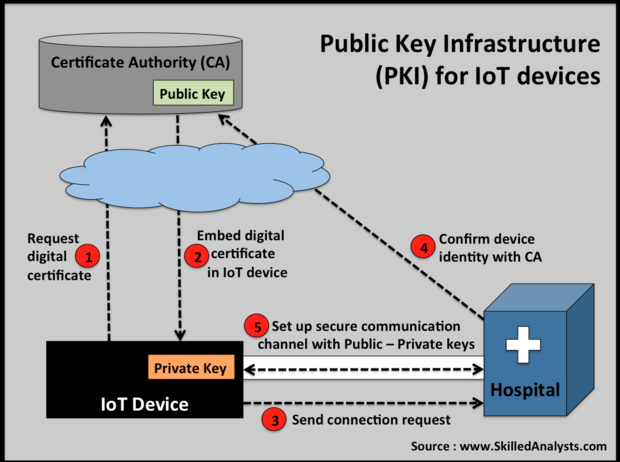- Java Create Public Private Key Certificate
- Public Key Vs Certificate
- Generate Public Private Key From Certificate Online
One of the most common forms of cryptography today is public-key cryptography helps to communicate two system by encrypting information using the public key and information can be decrypted using private key. These keys are using mainly on login to server securely and also transferring data securely.
The private key is generated simultaneously with the CSR (certificate signing request), containing the domain name, public key and additional contact information. The CSR is to be sent to the certificate authority for validation and signing immediately after the certificate activation in the Namecheap user account panel.
To have a certificate issued to you in the first place, you need to have a private/public key generated on the server that you want the cert on. Out of that you send the public key to the CA (along with other attributes) and get it signed. You then import the certificate to the server, which then logically binds the private and public key together. Oct 20, 2015 The public key, by contrast, is distributed as widely as possible – it’s included as part of your SSL certificate, and works together with your private key to make sure that your data is encrypted, verified and not tampered with during transport. Anyone with access to your public key can verify that your message is authentic without having. Dec 01, 2015 In order to enable HTTPS support for use with Iguana, you must first generate valid public key/private key certificates. These digital certificates are used to authenticate the sender. Keys are typically generated in pairs, with one being public and the other being private. The private key must be kept secret to ensure security. Jun 09, 2019 This article describes how to recover a private key after you use the Certificates Microsoft Management Console (MMC) snap-in to delete the original certificate in Internet Information Services (IIS). You delete the original certificate from the personal folder in the local computer's certificate store.
We can generate these private public keys by various ways.
1) By using openssl.
with password encryption
Generate public key:
2) By using ssh keygen
3) using putty-gen for windows.
Download puttyGen from http://www.chiark.greenend.org.uk/~sgtatham/putty/download.html and run it.
You can select one of the key types, SSH-1, SSH-2, and SSH-2 DSA.
SSH-2 is probably better than others but you have to make sure if your system supports SSH-2, if your system ( server) doesnt support it then you better off with SSH-1.
Level of encryption can be set from “Number of bits in a generated key” . Security level can be enhance by using 2048 but again make sure where you are using it and thus follow the recommendation for this value. I prefer 2048 but even with 1024 is much more secure.
Click on generate to create keys. Move your mouse over the empty space to help puttygen to genereate random variables.
Java Create Public Private Key Certificate
Once the key is generated you will see following window.
If you want to login without password ( in case of ssh login) you can put your passphase empty. click on Save Public key and Save private key to save your keys.
When you save private key it will be saved in ppk format which you can use putty to login to your system.
We can get private key for openSSH by clicking on Conversions->Export OpenSSH key
If you want to use ssh to login with these generated key / pair then
copy public key ( mykey.pub) to .ssh/authorized_key.
Generating Self sign certificate:
-->To sign an assembly with a strong name, you must have a public/private key pair. This public and private cryptographic key pair is used during compilation to create a strong-named assembly. You can create a key pair using the Strong Name tool (Sn.exe). Key pair files usually have an .snk extension.
Note

In Visual Studio, the C# and Visual Basic project property pages include a Signing tab that enables you to select existing key files or to generate new key files without using Sn.exe. In Visual C++, you can specify the location of an existing key file in the Advanced property page in the Linker section of the Configuration Properties section of the Property Pages window. The use of the AssemblyKeyFileAttribute attribute to identify key file pairs was made obsolete beginning with Visual Studio 2005.
Create a key pair
To create a key pair, at a command prompt, type the following command:
/sims-4-product-key-generator-mac.html. sn –k <file name>
In this command, file name is the name of the output file containing the key pair.
The following example creates a key pair called sgKey.snk.
If you intend to delay sign an assembly and you control the whole key pair (which is unlikely outside test scenarios), you can use the following commands to generate a key pair and then extract the public key from it into a separate file. First, create the key pair: Music remixer free download mac.
Public Key Vs Certificate
Next, extract the public key from the key pair and copy it to a separate file:
Once you create the key pair, you must put the file where the strong name signing tools can find it.
When signing an assembly with a strong name, the Assembly Linker (Al.exe) looks for the key file relative to the current directory and to the output directory. When using command-line compilers, you can simply copy the key to the current directory containing your code modules.
If you are using an earlier version of Visual Studio that does not have a Signing tab in the project properties, the recommended key file location is the project directory with the file attribute specified as follows: